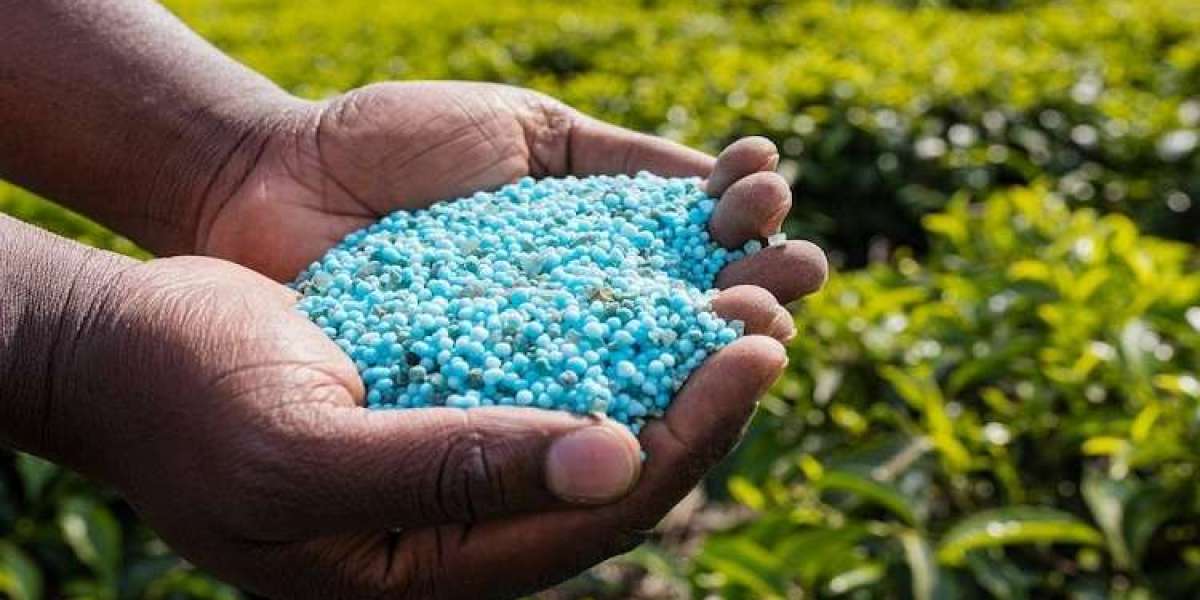According to TechSci Research report, “Canada Fertilizer Market- Industry Size, Share, Trends, Opportunity, and Forecast, 2018-2028”, Canada fertilizer market size is anticipated to increase at a substantial rate in the forecast period of 2024-2028. The growing demand for food in Canada, combined with favorable agricultural conditions and government support, is driving the growth of the Canada fertilizer market. The market is expected to continue to grow as the country's population increases and its agriculture sector expands. The world's population is growing, and with it comes, an increased demand for food.
Fertilizers help enhance crop yields by providing essential nutrients to plants, enabling farmers to meet the rising food demand. As per the report by the United Nations, to support the survival of the population and fulfill the need of 9.7 billion people's food by the year 2050, agriculture production will have to increase by 70 percent over the next 30 years. As the Canada is will hold 44 million people by 2030 with significant growth in agriucltural activities, it will lead to increase in the demand of filtizer in the upcoming period.
Moreover, the availability of arable land is limited, and in some cases, it is decreasing due to urbanization, land degradation, and other factors. Fertilizers allow farmers to maximize the productivity of existing agricultural land by optimizing nutrient levels and supporting plant growth. Governments in Canada develop agricultural policies and provide funding to support the agricultural sector, including the fertilizer market. These policies aim to enhance productivity, promote sustainable practices, ensure food security, and stimulate economic growth. Funding initiatives help farmers access resources, including fertilizers, at affordable prices, encouraging their use and driving market growth.
The Canadian fertilizer market is facing several challenges, including rising input costs, weather-related disruptions, competition from other countries, and environmental regulations. The cost of fertilizer inputs, such as natural gas and ammonia, has been rising in recent years. This has put pressure on fertilizer prices and made it more difficult for farmers to afford the nutrients they need, to produce crops.
Additionally, Canada is a major producer of fertilizer, but faces competition from other countries, such as Russia and China. These countries have lower production costs, which allows them to sell fertilizer at lower prices. Governments around the world are increasingly regulating the use of fertilizer. It is due to concerns about the environmental impact of fertilizer runoff, which can pollute waterways and contribute to climate change. Hence, to stay competitive, the industry needs to find ways to reduce costs, improve efficiency, and develop new products that are more environmentally friendly.
In addition to the challenges mentioned above, the Canadian fertilizer market is facing several external and uncontrollable challenges, such as the COVID-19 pandemic, global recession, and war in Ukraine. The war in Ukraine has disrupted the global fertilizer market, as Ukraine is a major producer of fertilizer. This has led to higher fertilizer prices and uncertainty about the future of the fertilizer market. Therefore, above mentioned factors are impeding the Canadian fertilizer market growth, but the industry is working to address these challenges and remain competitive in the global market.
Browse over XX market data Figures spread through XX Pages and an in-depth TOC on the "Canada Fertilizer Market"
https://www.techsciresearch.com/report/canada-fertilizer-market/15709.html
Canada fertilizer market is segmented based on origin, foam, mode of application, crop type, source, and region.
Based on the origin, the market is categorized into organic, synthetic, and bio-fertilizer. The bio-fertilizer segment is expected to hold the largest market share in the forecast period because of its environmental and economic benefits. Bio-fertilizers are organic substances that contain living microorganisms that enhance the nutrient availability and uptake of plants. They are more sustainable and cost-effective than chemical fertilizers, which can cause soil degradation, water pollution, and greenhouse gas emissions. Bio-fertilizers improve soil health and biodiversity, which can increase crop yield and quality.
Based on the crop type, the market is fabricated into grains & cereals, pulses & oilseeds, commercial crops, fruits & vegetables, and others. The pulses & oilseeds segment is expected to hold the largest market share in the forecast period owing to the high demand and profitability of these crops.
According to Farm Credit Canada (FCC), pulses and oilseeds produced exceptionally well in 2021, with an estimated 11.9% year-over-year growth in farm cash receipts. They faced higher input costs, especially for fertilizer, which increased by 12.0% for the first three quarters of 2021. Therefore, these producers may have invested more in fertilizer to boost their yields and quality, and to take advantage of the strong prices and export markets for their crops.
Major companies operating in the Canada fertilizer market are:
- Lucent Biosciences Inc.
- Nurture Growth Bio Fertilizer Inc.
- Soilgenic Technologies, LLC
- Alberta Eco Biotechnology Inc.
- Indogulf BioAg LLC
- CF Industries Holdings Inc.
- Yara International ASA
- Nutrien Ltd.
- The Mosaic Company
- AgriTec International Ltd.
Download Free Sample Report
https://www.techsciresearch.com/sample-report.aspx?cid=15709
Customers can also request for 10% free customization on this report.
“Canada is a significant player in the global fertilizer market, both as a producer and an exporter. The country has abundant natural resources, including vast reserves of potash, phosphate, and nitrogen, which are essential components for fertilizer production. Canada exports a considerable amount of fertilizers to international markets, including the United States, Brazil, India, and China. Canada exports 95 percent of potash, and 40 percent of nitrogen production to their trade partners or other countries.
Apart from these, Canada has engaged in numerous trade agreements, such as the Canada-United States-Mexico Agreement (CUSMA), which replaced the old NAFTA. These agreements have reduced trade barriers and provided favorable treatment for Canadian fertilizer exports to the United States and Mexico, two of Canada's largest trading partners. Additionally, Canada has trade agreements with other countries and regions globally, enabling market diversification and further growth opportunities.” said Mr. Karan Chechi, Research Director with TechSci Research, a research-based global management consulting firm.
“Canada Fertilizer Market By Origin (Organic, Synthetic, and Bio-fertilizer), By Form (Solid, Liquid), By Mode of Application (Foliar Spraying, Fertigation, Sowing, Broadcasting, Spraying, Drip Method, and Others), By Crop Type (Grains & Cereals, Pulses & Oilseeds, Commercial Crops, Fruits & Vegetables, and Other), By Source (Domestic, Import), By Region, Competition, Opportunity and Forecast, 2028”, has evaluated the future growth potential of Canada fertilizer market and provides statistics & information on market size, structure, and future market growth. The report intends to provide cutting-edge market intelligence and help decision-makers take sound investment decisions. Besides, the report also identifies and analyzes the emerging trends along with essential drivers, challenges, and opportunities in Canada fertilizer market.”
Contact
Mr. Ken Mathews
708 Third Avenue,
Manhattan, NY,
New York – 10017
Tel: +1-646-360-1656
Email: [email protected]








